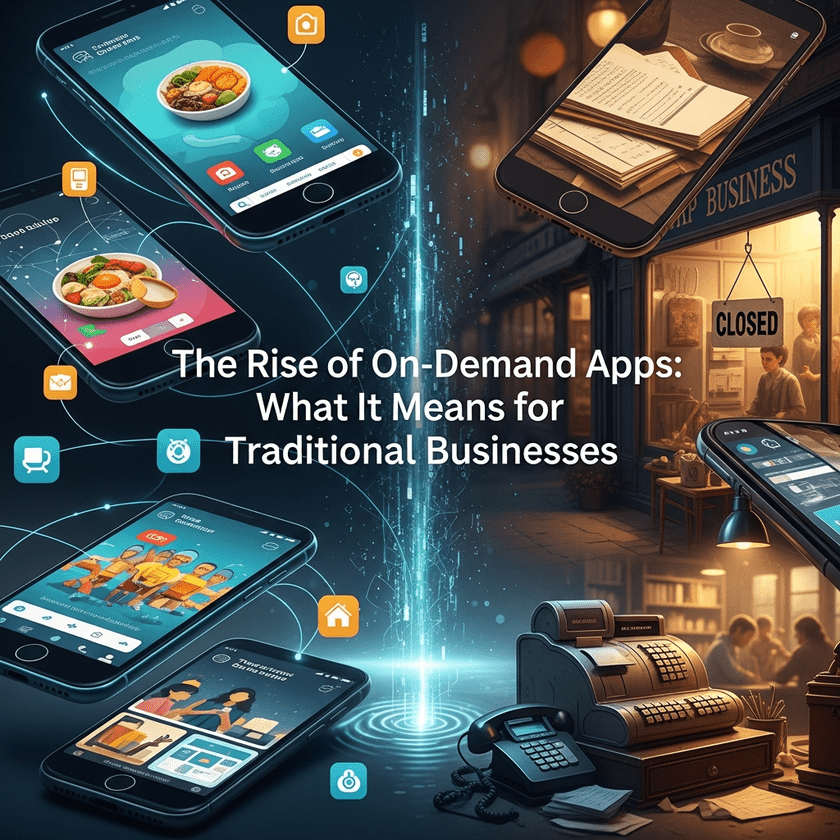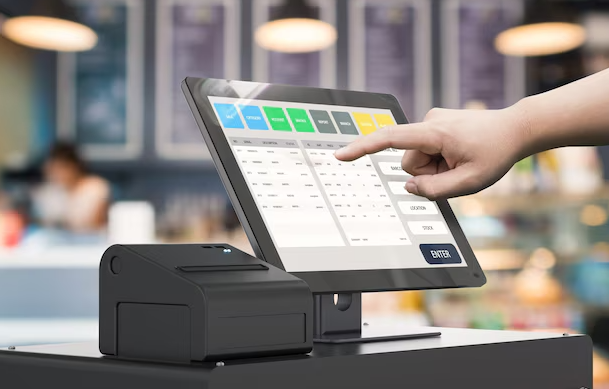On-demand apps have reshaped consumer behaviour globally, and in 2025, their influence has grown stronger than ever. From transportation and food delivery to healthcare, home services, and eCommerce, customers now expect instant access, instant service, and instant fulfilment. The shift has been so profound that traditional businesses—those operating through offline stores, manual processes, or legacy systems—are being forced to rethink their models entirely.
The rise of on-demand apps is not just a trend. It is a structural transformation in how services are delivered, how businesses operate, and how customers make decisions. For companies building through platforms like Idea2App or designing their own digital solutions, understanding the impact of on-demand ecosystems is essential for staying competitive and future-ready.
This blog explores how on-demand apps evolved, why they have become mainstream, and what their growth means for traditional businesses across sectors.
1. The Evolution of On-Demand Apps: From Convenience to Necessity
When on-demand apps first emerged, they were seen as a novelty—an easier way to book taxis, order food, or schedule home cleaning. But by 2025, they have become the default interface between customers and services.
Three major shifts shaped this evolution:
1.1 Customer expectations changed permanently
Consumers became accustomed to instant gratification through apps like Uber, DoorDash, Deliveroo, Zomato, Booking.com, and Amazon. Waiting days for products or hours for services now feels outdated.
1.2 Technology matured rapidly
Cloud computing, AI, machine learning, and location-based services made real-time operations possible. Businesses could track orders, manage inventory, assign tasks, and automate workflows with minimal human involvement.
1.3 The pandemic accelerated adoption
COVID-19 forced customers and businesses to embrace digital interactions. Services that once relied on physical presence evolved into app-first businesses.
Today, building an on-demand app is not innovation—it’s survival.
2. Why On-Demand Apps Are Growing So Fast in 2025
On-demand apps continue to dominate because they solve timeless customer problems: convenience, speed, transparency, and reliability.
2.1 Customers want frictionless convenience
For modern consumers, convenience is not optional. They want services that fit their busy lifestyles. On-demand apps allow them to:
Order instantly
Track progress
Pay digitally
Receive services at home
This level of control is something traditional businesses rarely offered.
2.2 Real-time information builds trust
Being able to track a delivery, see a driver’s location, check estimated arrival times, or monitor service quality gives users confidence. Traditional models lack this visibility.
2.3 AI and automation improve efficiency
AI route optimisation, smart dispatching, forecasting, and automated customer support make operations smooth and scalable.
Efficiency becomes a competitive advantage.
2.4 Habit formation leads to lasting adoption
Over time, consumers become dependent on apps they trust. Once behaviour changes, it rarely shifts back.
This explains why on-demand apps continue growing even in mature markets.
3. The Impact on Traditional Businesses: Adapt or Get Left Behind
Traditional businesses that ignore on-demand demand risk losing relevance as consumers move toward app-first competitors.
3.1 Declining footfall and offline sales
Customers prefer digital convenience over in-store visits. Retailers, restaurants, and service providers relying solely on walk-in traffic face declining sales.
3.2 Increased competition from digital-first brands
Startups born in the digital era outperform established companies by offering smarter, tech-driven experiences.
3.3 Limited operational visibility
Traditional businesses struggle to track performance. Without digital dashboards, insights, or analytics, decision-making becomes slow.
3.4 Slower service delivery
On-demand apps optimise speed through automated workflows. Manual processes feel outdated in comparison.
Also Read: Super App Development
3.5 Customer loyalty becoming harder to win
Apps use personalised engagement, targeted offers, and AI-driven recommendations. Traditional businesses cannot match this without adopting digital strategies.
To remain competitive, they must evolve—not later, but now.
4. How Traditional Businesses Can Transform Using On-Demand Models
Instead of resisting change, traditional companies can embrace on-demand transformation in several ways.
4.1 Creating their own on-demand app
This is the most direct approach. By building an app using platforms like Idea2App, businesses can:
Offer instant ordering
Enable digital payments
Provide real-time tracking
Automate customer communication
Collect user data for better decisions
This brings them to the same playing field as digital-first businesses.
4.2 Partnering with on-demand platforms
Restaurants, salons, tutors, mechanics, doctors, and retailers can expand reach by using platforms like:
DoorDash
TaskRabbit
Uber
Amazon
Airbnb
JustEat
This helps businesses gain digital visibility before launching their own proprietary solution.
4.3 Modernising operations with automation
Even before going fully digital, businesses can implement:
CRM systems
Inventory automation
Digital payment gateways
Real-time notifications
Schedule management tools
These reduce operational bottlenecks and improve customer experience.
4.4 Using AI-powered personalisation to boost engagement
AI can help businesses offer personalised:
Recommendations
Promotions
Content
Customer support
This bridges the gap between traditional service and digital expectations.
5. The New Customer Journey in On-Demand Ecosystems
On-demand apps have completely redefined the customer journey. What earlier required multiple steps is now streamlined through a single interface.
A typical customer journey includes:
Discovery → Search
Evaluation → Filters & reviews
Action → Order or booking
Execution → Tracking and updates
Fulfilment → Delivery or service
Post-journey → Rating and feedback
The entire cycle takes place without phone calls or physical visits.
Traditional businesses must now design experiences that reflect this journey, not outdated manual processes.
6. Benefits for Businesses That Go On-Demand
Companies that adopt the on-demand model experience measurable business gains.
6.1 Increased sales and wider reach
Apps allow businesses to serve customers 24/7, without geographical limits.
6.2 Better customer experience
Transparency, speed, and consistency build loyalty and repeat purchases.
6.3 Lower operational cost
Automation reduces manual labour, errors, and inefficiencies.
6.4 Real-time data for smarter decisions
Apps provide insights into:
What customers want
How they behave
When they order
What they dislike
How operations can be optimised
6.5 Scalable growth model
On-demand businesses can expand rapidly into new areas or categories without complicated overhead.
7. What the Future Holds: On-Demand 2.0
In 2025 and beyond, the on-demand economy will move into its next phase—smarter, faster, more automated, and integrated.
Key future trends include:
AI-driven scheduling
Autonomous deliveries
Hyper-personalised user journeys
Predictive ordering
Subscription-based service models
Voice-based ordering
Drone logistics
Blockchain transparency
The businesses that adopt technology early will dominate this next wave.
Final Thoughts
The rise of on-demand apps is not just reshaping markets—it’s reshaping customer psychology. People now expect digital-first interactions, transparent operations, personalised experiences, and instant fulfilment. Traditional businesses that fail to adapt will fall behind. Those that embrace technology will unlock growth, improve efficiency, and strengthen their place in the new economy.
Platforms like Idea2App make this transition easier than ever. With AI-powered ideation, development accelerators, automation modules, and scalability baked into the system, building your own on-demand app is now faster, smarter, and more affordable.
The future belongs to businesses that evolve—and the time to evolve is now. As a leading on-demand app development company, we are here to help you.






